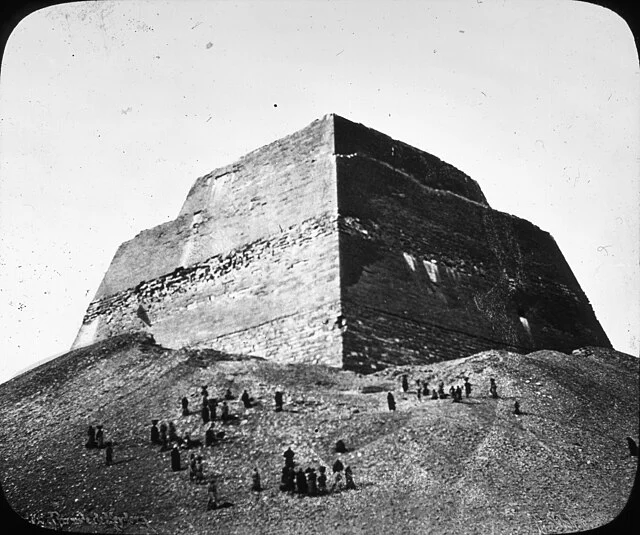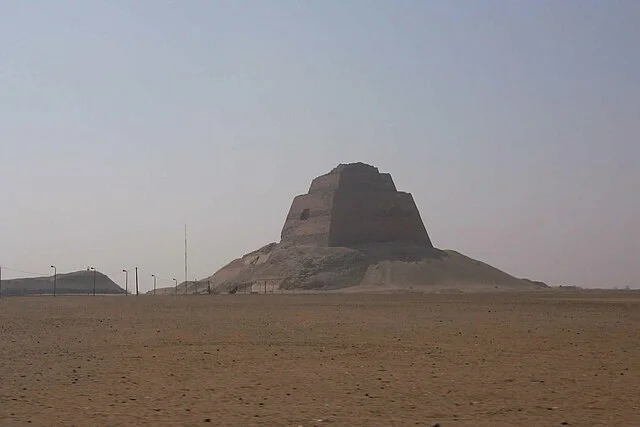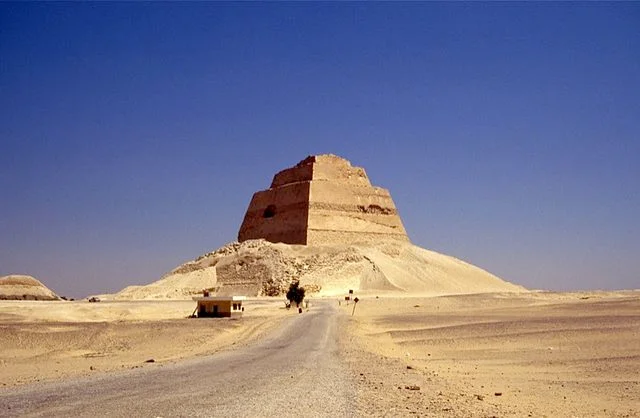The Pyramid of Huni, also called the Meidum Pyramid, is one of Egypt’s oldest pyramid structures. Likely built during the Third Dynasty around 2600 BC, this pyramid marks an important step in the evolution of pyramid architecture. Though attributed to Huni, the last pharaoh of the Third Dynasty, this monument may have been completed or altered by his successor, Pharaoh Sneferu. Understanding this pyramid provides valuable insight into early Egyptian construction techniques and beliefs surrounding kingship and the afterlife.
Get your dose of History via Email
Huni and the Origins of the Meidum Pyramid

Huni’s reign, around 2630–2600 BC, represented a transitional period in Egyptian history. He ruled near the end of the Third Dynasty and is believed to have commissioned the Meidum Pyramid as his tomb. However, unlike earlier kings, Huni chose a step pyramid design, following a style similar to the nearby Step Pyramid of Djoser in Saqqara. This choice suggests a continued experimental phase in pyramid construction before the smooth-sided structures of later dynasties.
Historical records offer little detail on Huni himself, but evidence indicates he sought to establish new architectural standards. Archaeologists often debate whether he fully constructed the Meidum Pyramid or if it remained unfinished at his death. This ambiguity leaves open questions about the intentions and purposes Huni envisioned for his burial complex.
Completion and Alterations Under Sneferu

When Sneferu, Huni’s successor, assumed the throne around 2600 BC, he made significant changes to the Meidum Pyramid. Sneferu’s construction innovations transformed it from a step pyramid into a more traditional, smooth-sided form. However, these alterations appear to have contributed to the pyramid’s later structural instability.
Sneferu’s adjustments to the pyramid, using outer casing stones to smooth the surface, reflect his goal of creating an idealized resting place. Yet, the Meidum Pyramid ultimately collapsed, likely due to design flaws introduced during this transition. Some historians believe the pyramid’s final collapse happened well after Sneferu’s lifetime, though the precise cause remains uncertain.
Architectural Features and Innovations

The Meidum Pyramid was originally built in a stepped form with seven layers, though it was later expanded to eight. Unlike earlier pyramids, the Meidum structure lacked complex mortuary temples and subsidiary pyramids, focusing mainly on the central burial structure.
Inside, the Meidum Pyramid has a straightforward burial chamber, accessible through a descending passage. Despite its simplicity, this layout indicates the experimental nature of early pyramid designs. The burial chamber was intended to house Huni’s remains, although evidence suggests it was never used for its intended purpose.
An outer casing made of fine Tura limestone was added during Sneferu’s reign to give the structure a smooth appearance. However, later surveys revealed this casing stone rested on unstable foundations, which contributed to its eventual collapse. The remnants of the Meidum Pyramid now resemble a crumbling tower, standing alone in Egypt’s desert landscape.
The Pyramid’s Legacy and Historical Significance

Though the Meidum Pyramid suffered a partial collapse, it significantly influenced later pyramid construction. Sneferu’s experiments here paved the way for the fully smooth-sided pyramids seen at Dahshur and Giza. The innovations and challenges faced in Meidum informed architectural advancements that made larger, more stable pyramids possible in the Fourth Dynasty.
Despite its damaged state, the Meidum Pyramid remains a landmark in Egypt’s architectural history. Its construction reflects early Egyptians’ determination to achieve monumental burial structures, a tradition that would reach its height with the Great Pyramid of Giza. Researchers continue to study the Meidum Pyramid for insights into the trial-and-error methods that shaped Egypt’s architectural legacy.
Conclusion
The Pyramid of Huni stands as a testament to Egypt’s early architectural ambition and innovation. While initially designed as a step pyramid, it was later modified in an attempt to create a smooth-sided form, foreshadowing the classic pyramid style. The structure’s partial collapse highlights both the experimental challenges and successes of early pyramid construction. As a monument of historical significance, the Meidum Pyramid reflects the evolving skills and aspirations of ancient Egypt’s builders and their rulers’ desire to be immortalized in stone.
Source:

